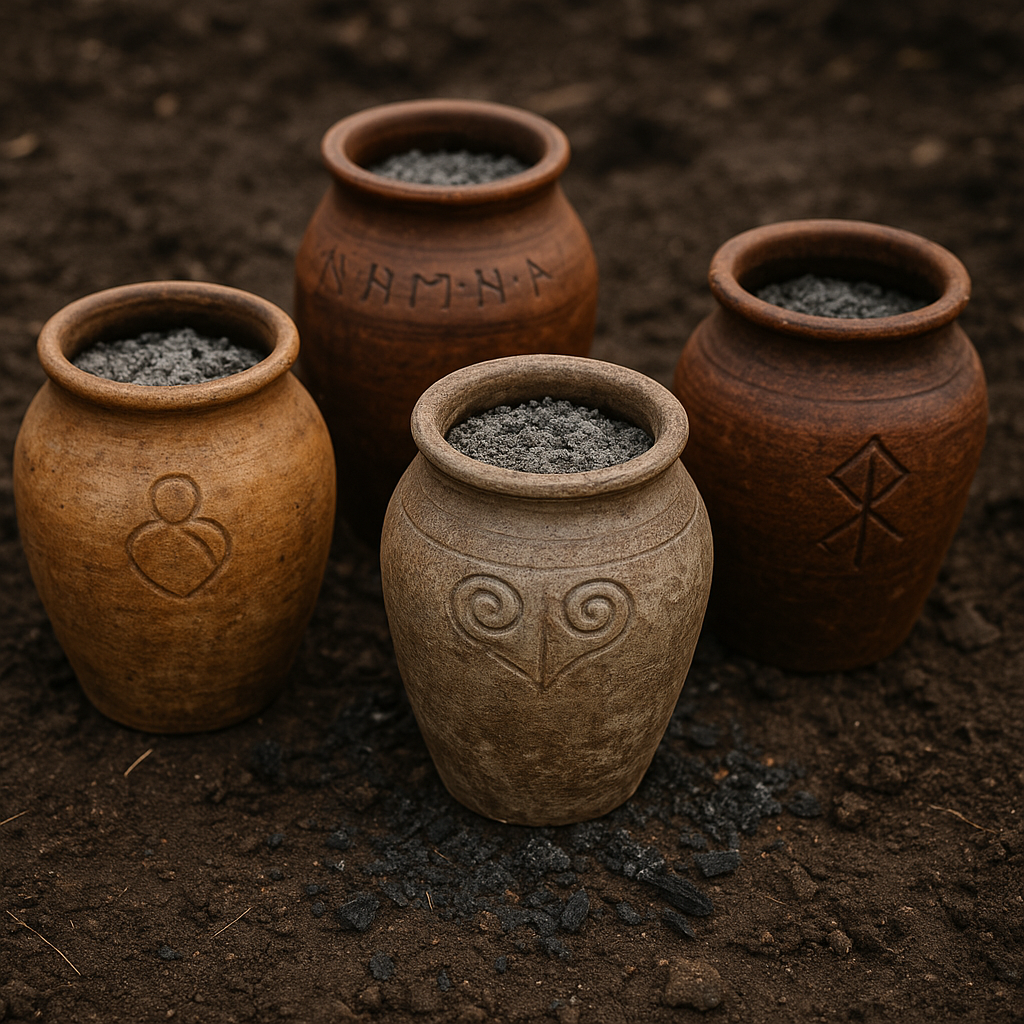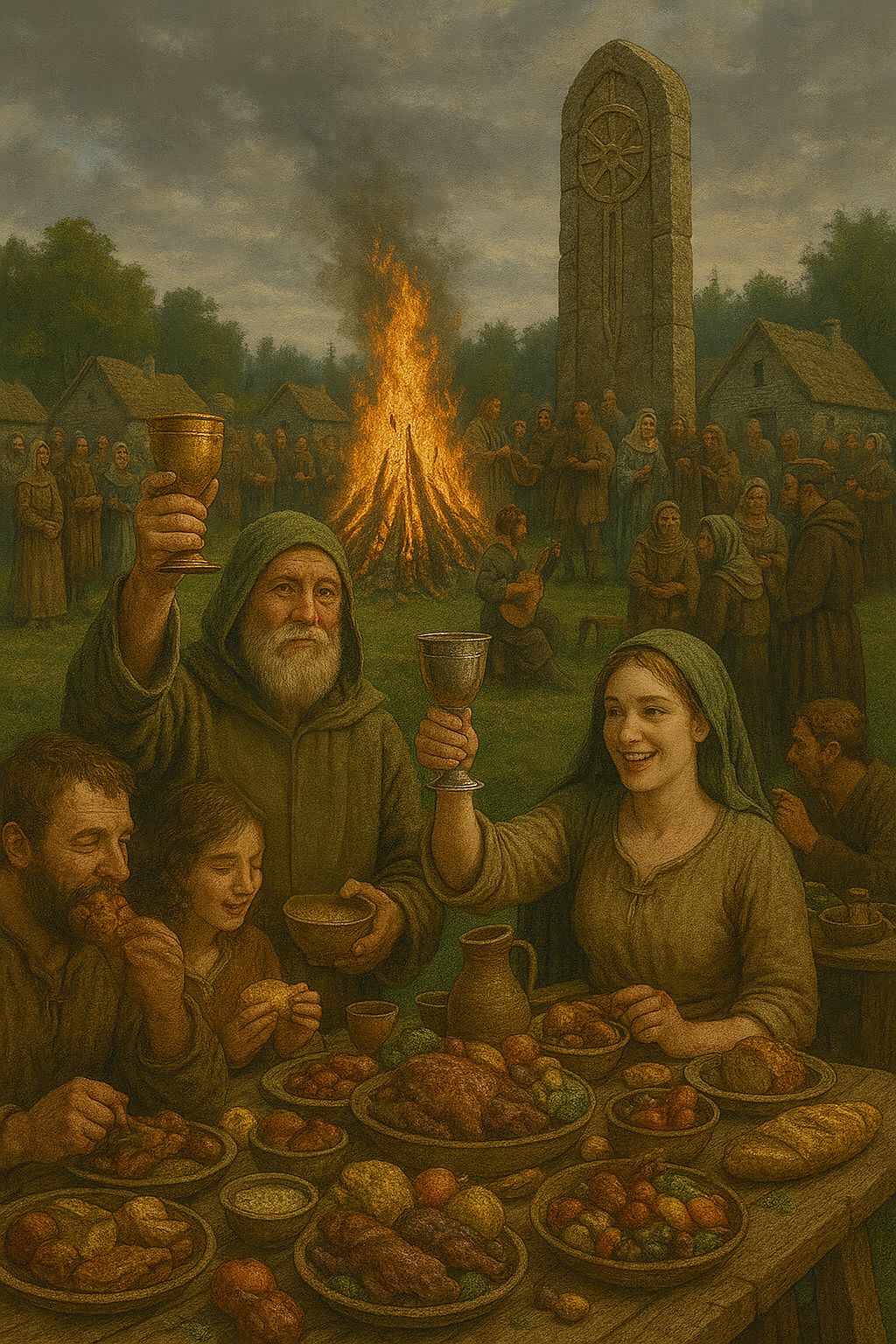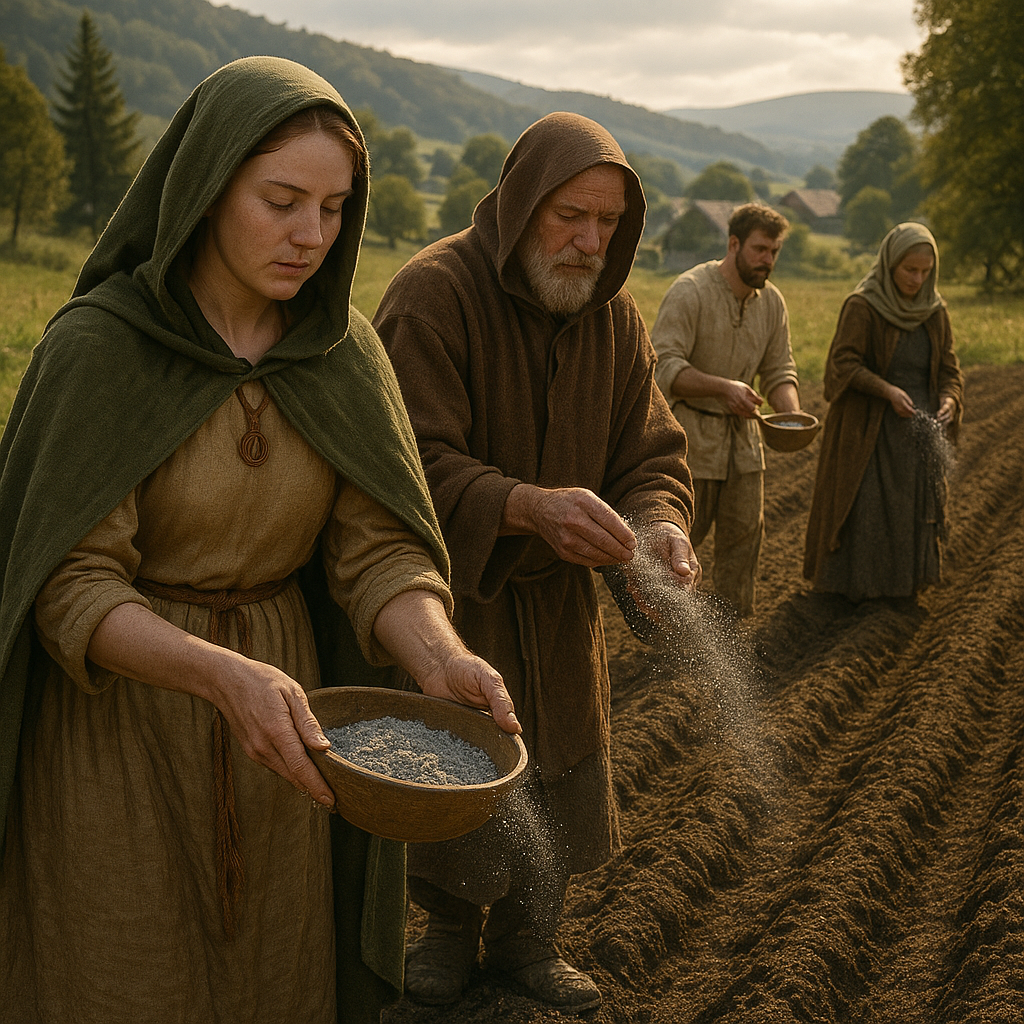A Rite of Everlife
“No soul is truly lost if the fields still remember their name.”
Introduction: More Than Seeds
Caerwreath is a kingdom forged between ice and freedom. Its mountains to the north rise white and unyielding, gripped in winter for much of the year. Yet toward the south, the land breathes out into rolling hills, green plains, and vast forests. Here, the soil is fertile, if only for a season, and every harvest becomes an act of defiance against hardship. To the people of Caerwreath, farming is more than survival. It’s rebellion. It’s faith. It’s proof that no matter how fiercely the empire threatens, or how deep the snow falls, life can still grow from the cold earth. It’s in this spirit that the Rite of Everlife stands as one of Caerwreath’s most sacred traditions. A ritual that weaves magic, memory, and mourning into one unified act.Origins of the Rite
The origins of the Rite of Everlife reach deep into Caerwreath’s past, back to the early days of rebellion against the Aeravalz Empire. When villages burned and fields lay fallow, the survivors gathered the ashes of their fallen kin. They carried them not only for remembrance, but as a promise: that from sacrifice, new life would rise. No official decree founded the Rite. It grew organically, passed from grieving families to entire villages, woven into the customs of those determined to remain free. Even the gods are tied to this practice. Many believe the first seeds sown with ashes were blessed by Caiden, God of Earth, Growth, Plants, and Erde (Spring). To this day, the people of Caerwreath believe that the souls of their ancestors walk beside them in the furrows of the fields.The Feasts of the Fallen
Before the soil is tilled or seeds are scattered, another tradition must unfold: the Feasts of the Fallen. This kingdom-wide observance honours the dead, particularly those who perished defending Caerwreath’s freedom. These Feasts are far more than funeral rites… they’re social and spiritual anchors binding the entire realm together. Throughout Caerwreath, the Feasts happen in varied but recognisable forms:Timing of the Rite
The Rite of Everlife begins when winter’s hold loosens. In Caerwreath, planting happens in Zeraph (Month 5 out of 14 months of the year), during the Erde Session, the time of growth, renewal, and planting. The rite specifically falls on the Day of Terra (Day 5 of the Eluvemar’s eight day week), a day sacred to stone, soil, and survival. In the south, where most farming happens, snow has melted enough for fields to be worked. The land smells of thawed earth, wet leaves, and the sharp tang of old frost receding. It is here, under Jaune’s first bright dawns, that the people of Caerwreath gather for the Rite.Steps of the Rite of Everlife
The ritual unfolds in careful stages, each layered with symbolism and community participation. It’s not merely a religious act: it’s a spectacle, a communal bond, and a magical investment in the future.
Part 1: Gathering the Ashes
When Wesser (Winter) has ended, ashes are collected from the Feasts of the Fallen. These urns are stored with honour, each marked by:Part 2: The Circle of Remembrance
Once at the fields, the community forms a vast circle, sometimes spanning entire furrows. A designated speaker, often a village elder or a priest or priestess, steps into the centre. They begin the ritual by calling out: “Who walks still among us?” And from around the circle, people speak the names of the fallen. Each name is followed by the communal response: “May their roots run deep.” Sometimes, names are shouted with fierce pride. Other times, they’re spoken as whispers choked with emotion. But every name echoes across the soil, as if being sown into the land itself.Part 3: Mixing the Ashes
Next, the urns are opened and carefully the ashes are poured into large wooden bowls containing seeds for the coming season, wheat, barley, root vegetables, fruit trees. While the ashes are mixed, villagers chant softly in Ancient Dwarvish:
“From stone to seed, from ash to green. Life eternal, ever seen.”
The ashes bind with the seeds, dusting them in pale grey. Elders say this mingling passes the strength, courage, and memory of the fallen into the future harvest.
Part 4: The Seeding Chant
This is one of the most beautiful parts of the ritual. Lines of villagers walk between the furrows, sowing the ash-laced seeds into the soil. As they walk, they sing the Everlife Chant, a song with a rising, lilting melody. Each verse is answered by the community, echoing across the fields. The chant calls for:Part 5: Magical Blessings
Once the seeds lie beneath the earth, priest/priestess or elder mage step forward. They move among the furrows, lightly touching the soil, murmuring spells. Subtle magic flows from their fingers into the ground:Part 6: The Offering of Water
After the seeds are sown and blessed, the entire gathering joins for one last, crucial gesture. Villagers carry pitchers, gourds, or wooden buckets filled with water drawn from deep ground springs or stored from melted snows of Wesser. They move along the furrows, pouring small rivulets over the soil where seeds have been planted. This water is considered a final bond, carrying both the memory of winter and the promise of spring. Children are often given the honour of pouring the first drops, a symbol that new life belongs to the next generation. A final chant rises as water soaks into the earth: “Drink the fallen tears, grow the living light.” It’s a line believed to have come from the very first Everlife Chant sung by Caerwreath’s early rebels.Part 7: Communion and Feast
With the fields blessed and sown, the community turns to celebration. Tables are laid out at the edge of the fields, laden with:Cultural Meaning
The Rite of Everlife is far more than a planting ritual. For the people of Caerwreath, it’s the living core of their identity. Here’s why it resonates so deeply:Death Becomes Life
Caerwreath’s people refuse to separate grief from hope. By blending ashes into seed, they:Unity Between Magical and Non-Magical Folk
Caerwreath is a kingdom where magic is woven openly into daily life. Unlike the Empire, which outlaws magic, Caerwreath embraces it. The Rite of Everlife:Seasonal Pivot
Culturally, the Rite of Everlife marks the true end of Wesser. While calendars say spring arrives with the first thaw, most Caerwreath folk believe the year’s new cycle doesn’t begin until seeds have been sown with the ashes of the fallen. Children born after the rite are sometimes called Everlings, seen as especially blessed by Caiden.A Symbol of Resistance
Every seed sown in the Rite of Everlife carries silent defiance against the Aeravalz Empire. It’s a way for the people to say:Magical Effects and Benefits
The magic woven into the Rite of Everlife produces tangible benefits:Personal Effects on Participants
Those who participate in the rite often experience:Secrets and Legends
As with any ancient tradition, the Rite of Everlife brims with secrets and whispered tales.Triple Moon Alignment
Legends say that if the Rite of Everlife is performed during a Triple Moon Alignment (when all three moons of Eluvemar, Nylu, Lina, and Ralo, appear full in the sky), astonishing things may happen:The Ashes’ Other Use
Some dark rumours persist that secret cults have tried to use the ashes for:The Fields That Whisper
Old soldiers claim that certain fields, sown year after year through the rite, become “speaking fields.” In moments of wind and rustling stalks, they swear they hear:Regional Variations
Though the Rite of Everlife is kingdom-wide, subtle differences emerge between regions.Southern Plains and Hills
Northern Highlands
For Newcomers and Scholars
For students studying Caerwreath, or travellers exploring the kingdom, attending the Rite of Everlife offers profound insight into:In Summary
The Rite of Everlife is not simply a ritual of sowing seeds. It is:Remove these ads. Join the Worldbuilders Guild











This article understood the assignment, and might be my favorite for this prompt thus far. Weaving narrative and process beautifully to lay out an entire process with the reverence that the narrative describes it has. It truly reads not just as a like idea given life in camp, which are beautiful in themselves, but something you've lived with, dreamed with, and spent a great deal of love and time with. You've spent intimate time with the 'whys' not just the hows or what it means. You've spent time in the shoes of those to whom this ritual and rite is of import and lived as they've lived in your mind's eye, to feel as they feel, and to have their reverence to the subject. You spend time and words on each detail, laying out well the process, and yet the manner in which you do it, the bits of description and emotion to go with the processes themselves, really bring it home to read. Wonderful work, definitely tucking this one into my collection :)
Thank you so much for this incredibly thoughtful comment <3 it genuinely means the world to me. I’m so glad you could see the sense of reverence and history in my ramblings. Writing this piece felt like standing in those fields myself, hearing the chants echo across the furrows. Honestly, I’d been wondering if I was writing way too much for some of these prompts… the minimum is only 300 words, and this one somehow turned into over 2200. Clearly, I have no chill when it comes to writing. But hey, I suppose you could say writing it really grew on me. (Sorry… I’ll leaf now.) Truly, thank you for taking the time to read this article